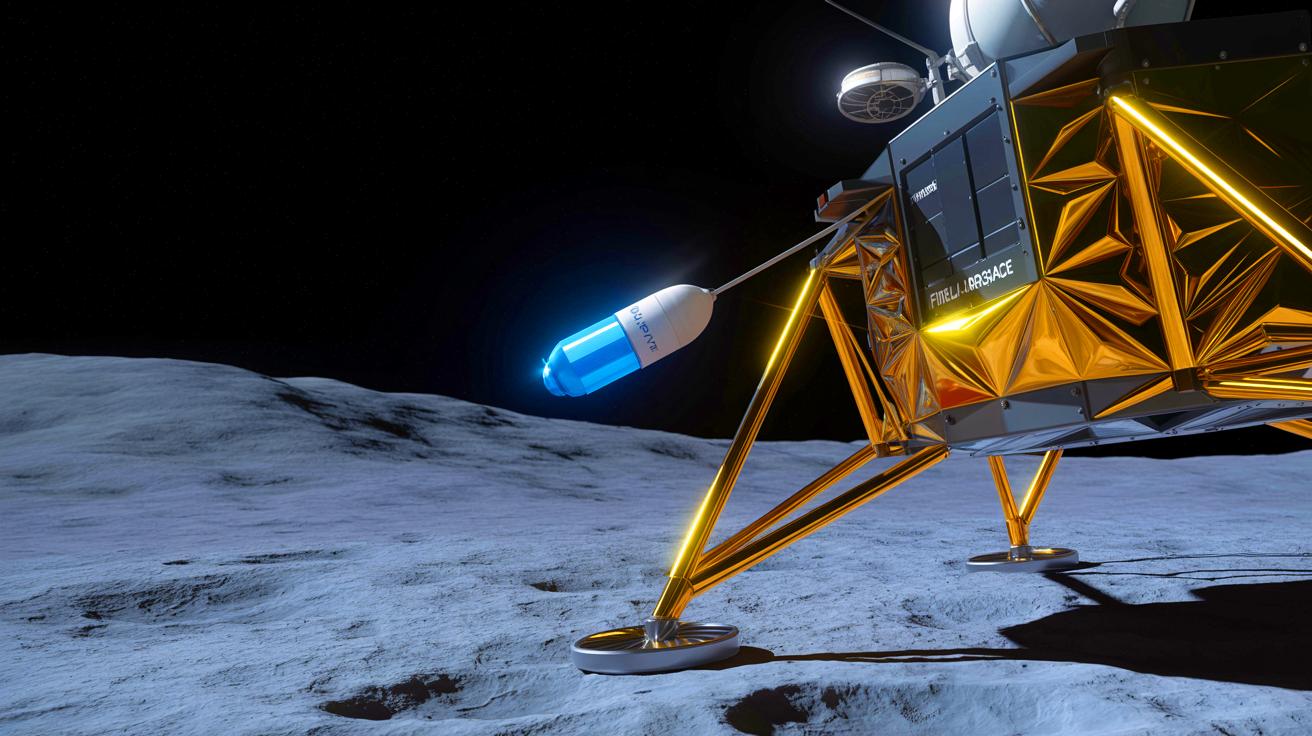IN A NUTSHELL
🚀 Firefly Aerospace has been awarded a $176.7 million contract by NASA to conduct a lunar exploration mission to the Moon’s south pole by 2029.
🔍 The mission will deploy the Blue Ghost lander and the Elytra vehicle to deliver a variety of scientific payloads aimed at analyzing lunar resources.
🌕 The Elytra vehicle will provide extended services in lunar orbit, supporting data relay and imaging for over five years.
🤝 This partnership highlights the growing role of private companies in space exploration, fostering innovation and collaboration with governmental agencies.
Firefly Aerospace has secured a substantial $176.7 million contract with NASA to explore the Moon’s south pole, marking another significant milestone in commercial space endeavors. This undertaking is part of NASA’s Commercial Lunar Payload Services (CLPS) initiative, which aims to leverage private sector capabilities in exploring and utilizing lunar resources. Firefly’s mission will involve the use of its Blue Ghost lander and Elytra vehicle to perform a 12-day surface mission, delivering an array of scientific payloads designed to analyze the Moon’s surface and support future lunar exploration. This development highlights the growing role of private companies in space exploration, promising new frontiers for scientific discovery and commercial ventures.
Firefly’s Ambitious Mission to the Moon
Firefly Aerospace’s upcoming mission is set to deploy a diverse range of scientific payloads to the Moon’s south pole. This mission, known as Blue Ghost Mission 4, will deliver the MoonRanger rover, a rover from the Canadian Space Agency, and three scientific instruments. These instruments include the Laser Ablation Ionization Mass Spectrometer (LIMS), the Laser Retroreflector Array (LRA), and the Stereo Cameras for Lunar Plume Surface Studies (SCALPSS). SCALPSS, having flown on a previous Blue Ghost mission, will contribute to understanding how lander engines interact with the lunar surface.
The mission’s primary objectives are to evaluate potential lunar resources such as water and hydrogen, and to examine the chemical composition of the lunar regolith. Additionally, the mission will study the environmental hazards on the Moon, providing crucial data for future endeavors. The Blue Ghost lander will operate for over 12 days on the Moon’s surface, while the Elytra vehicle will remain in orbit for more than five years, offering long-term imaging and data relay services through Firefly’s Ocula lunar imaging platform.
Elytra’s Role in Extended Lunar Services
Firefly’s Elytra vehicle plays a critical role in the mission, providing extended support through its long-term presence in lunar orbit. The company plans to deploy two additional Elytra Dark vehicles before the 2029 mission, one to the Moon’s far side in 2026, and another to the Gruithuisen Domes in 2028. These deployments will enhance Firefly’s capability to support lunar exploration and offer valuable services such as lunar imaging, mission planning, and communications.
Chris Clark, Vice President of Spacecraft at Firefly, emphasized the advantages of the Elytra constellation, stating that these vehicles are highly maneuverable and built with flight-proven components. This infrastructure positions Firefly to offer comprehensive services across the Moon’s surface, enabling both commercial and governmental partners to partake in the 2029 mission. The modular approach aims to streamline future lunar logistics, aligning with NASA’s goals for sustainable lunar operations.
Innovation and Collaboration in Lunar Exploration
Firefly Aerospace’s contract with NASA underscores the increasing collaboration between private companies and governmental space agencies. This partnership is essential in advancing lunar exploration efforts, as it combines the innovative capabilities of the private sector with the strategic goals of NASA. The mission’s success will depend on Firefly’s proven track record of completing rigorous scientific objectives, as demonstrated in previous missions.
Jason Kim, CEO of Firefly Aerospace, expressed pride in supporting another NASA CLPS task order. He noted the team’s commitment to setting high standards in space exploration, driven by a mix of grit, innovation, and dedication. The invitation extended to commercial and government partners to join the 2029 mission further exemplifies the collaborative spirit driving the space industry forward.
Looking Ahead to Future Lunar Missions
The success of Firefly Aerospace’s upcoming mission could pave the way for more ambitious lunar exploration projects. By demonstrating the viability of commercial partnerships in space exploration, this mission could inspire other companies to participate in future lunar endeavors. The integration of private sector innovations into NASA’s strategic plans represents a significant shift in how space exploration is conducted.
As Firefly Aerospace prepares to launch its mission, the implications extend beyond scientific discovery. The potential for utilizing lunar resources and establishing a sustainable presence on the Moon could have far-reaching effects on both scientific understanding and economic opportunities. As we look to the future, the question remains: how will these collaborative efforts shape the next era of space exploration?
This article is based on verified sources and supported by editorial technologies.
Did you like it? 4.5/5 (27)

